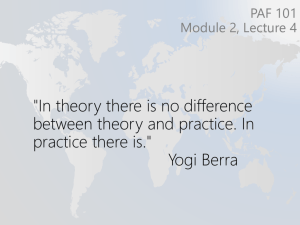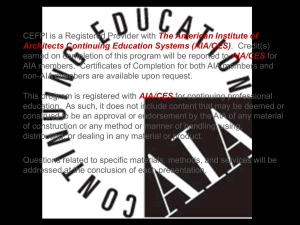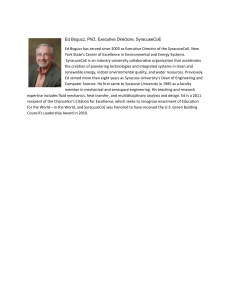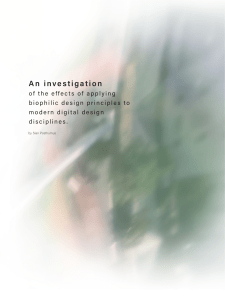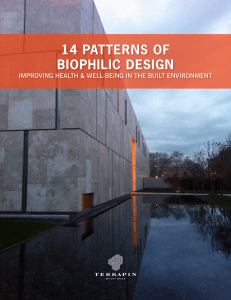Seeing the Light: Case Studies in Biophilic Design Pam Campbell
advertisement
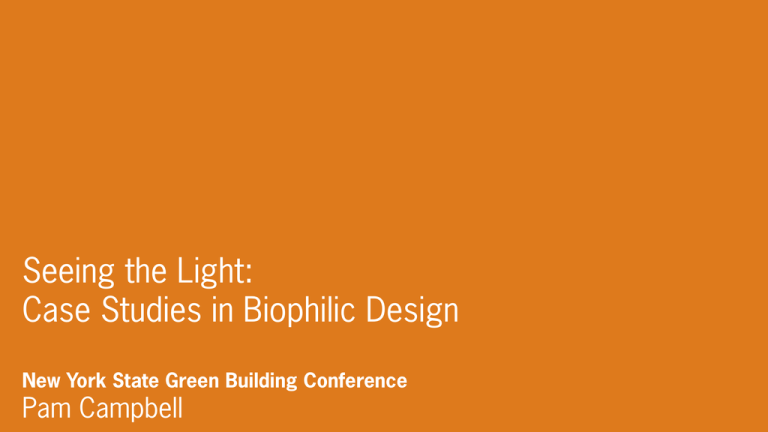
Seeing the Light: Case Studies in Biophilic Design New York State Green Building Conference Pam Campbell The U.S. Green Building Council New York Upstate Chapter is a Registered Provider with The American Institute of Architects Continuing Education Systems (AIA/CES). Credit(s) earned on completion of this program will be reported to AIA/CES for AIA members. Certificates of Completion for both AIA members and non-AIA members are available upon request. This program is registered with AIA/CES for continuing professional education. As such, it does not include content that may be deemed or construed to be an approval or endorsement by the AIA of any material of construction or any method or manner of handling, using, distributing, or dealing in any material or product. Questions related to specific materials, methods, and services will be addressed at the conclusion of this presentation. Copyright Materials This presentation is protected by US and International Copyright laws. Reproduction, distribution, display and use of the presentation without written permission of the speaker is prohibited. © U.S. Green Building Council New York Upstate Chapter 2011 Learning Objectives Seeing the Light: Case Studies in Biophilic Design / - NYSGBC06 / 2011 Learning Units: 1 Credit Designations: LU|HSW|SD Learning Objective 1: Cite the categories and core principles of biophilia. Learning Objective 2: Define how biomimicry can be a resource for design Learning Objective 3: Explain two techniques for integrating biophilic design into architecture Learning Objective 4: List two benefits of biophilic design on health and productivity Course Evaluations In order to maintain high-quality learning experiences, please access the evaluation for this course by logging into CES Discovery and clicking on the Course Evaluation link on the left side of the page. Near Westside Neighborhood Near Westside Neighborhood Near Westside Neighborhood Syracuse lost 10.07% of its population between 1990-2000 The Near Westside neighborhood lost 19.32%; only 6 cities nationwide declined at a faster rate than Syracuse during this period LIVING NEIGHBORHOOD DENSE RESIDENTIAL WORKING NEIGHBORHOOD PERIPHERAL INVESTMENT LIVE/WORK NEIGHBORHOOD STRATEGIC INFILL FLOOR PLAN “Our beds are empty two-thirds of the time. Our living rooms are empty seven-eighths of the time. Our office buildings are empty one-half of the time. It’s time we gave this some thought.” Buckminster Fuller PLAN GENERATIONS SINGLE removable panel DOUBLE shelving removable panel closet daybed/bed storage drawers BUNK bed closet double bed ladder fold-out desk adjustable base bed behind shelving shelving removable panel closet fold-out desk fold-out desk bed storage drawers LIVE 1 LIVE WORK 6 WORK 7 Syracuse Climate Syracuse Climate Syracuse Climate The Bank of America Tower at One Bryant Park This concludes The American Institute of Architects Continuing Education Systems Program
